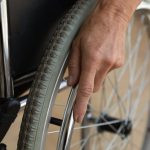 Creating a home that is wheelchair accessible is not only beneficial for people with disabilities but also for older adults and individuals recovering from injuries. Making modifications to your home can improve accessibility and enhance the overall quality of life for individuals with mobility challenges. In this blog post, we will provide a comprehensive guide to making your home wheelchair accessible, covering various aspects of accessibility modifications.
Creating a home that is wheelchair accessible is not only beneficial for people with disabilities but also for older adults and individuals recovering from injuries. Making modifications to your home can improve accessibility and enhance the overall quality of life for individuals with mobility challenges. In this blog post, we will provide a comprehensive guide to making your home wheelchair accessible, covering various aspects of accessibility modifications.
1. Entryways and Doorways:
The first step in creating a wheelchair accessible home is ensuring that entryways and doorways are wide enough to accommodate a wheelchair. The standard doorway width is typically 32 inches, but widening them to at least 36 inches can provide more maneuverability for wheelchair users. Installing ramps or lifts to remove barriers, such as steps or raised thresholds, is also essential for easy and convenient access into and out of the home.
2. Flooring and Surfaces:
Choosing the right flooring and surfaces is crucial for wheelchair accessibility. Hard surfaces, such as wood, tile, or laminate flooring, are preferable for smooth maneuvering with a wheelchair. Avoid thick carpets or rugs, as they can create obstacles and make pushing a wheelchair more difficult. Additionally, ensure that all surfaces are even, eliminating any bumps or uneven transitions between rooms.
3. Hallways and Pathways:
Widening hallways and pathways throughout your home is essential to accommodate wheelchair movement. Aim for a minimum hallway width of 36 inches or more, allowing enough space for easy navigation. Remove any unnecessary furniture or obstacles that may obstruct the wheelchair’s path. Installing handrails along the walls can provide stability and support for individuals using wheelchairs or walkers.
4. Kitchen Modifications:
In the kitchen, there are several modifications you can make to improve accessibility. Lowering countertops and sinks to a height that is comfortable for wheelchair users is crucial. Installing pull-out shelves or drawers can make accessing items easier. Consider adjusting the height of appliances, such as ovens and refrigerators, or installing appliance lifts for convenient use. Lever handles on cabinets and faucets are also more accessible than traditional knobs.
5. Bathroom Accessibility:
Creating a wheelchair accessible bathroom requires specific modifications. Install grab bars near the toilet and in the shower area to provide stability and support. Consider replacing a traditional bathtub with a roll-in shower that has a built-in bench or seat. Installing a height-adjustable showerhead and a hand-held shower can accommodate individuals with different mobility needs. Adjust the sink height and ensure there is enough knee clearance under the counter to allow wheelchair users to access the sink comfortably.
6. Bedroom and Living Spaces:
Making the bedroom and living spaces in your home wheelchair accessible involves ensuring enough room to maneuver and access furniture. Aim for a minimum of a five-foot turning radius in bedrooms to allow for easy wheelchair navigation. Lowering the height of light switches and installing reachable outlets can increase accessibility. Consider adjustable furniture, such as beds or chairs, to accommodate various wheelchair positioning needs.
7. Accessibility Outside the Home:
Don’t forget about the exterior of your home when making it wheelchair accessible. Installing ramps or gentle slopes to all entrances and exits is crucial for smooth transitions. Ensure there are handrails for added stability and safety. Outside areas, such as gardens or patios, should have smooth and level surfaces to allow wheelchair users to enjoy outdoor spaces comfortably.
Summary:
Implementing wheelchair accessibility modifications to your home can greatly improve the quality of life for individuals with mobility challenges. By considering entryways and doorways, flooring and surfaces, hallways and pathways, kitchen modifications, bathroom accessibility, bedroom and living spaces adjustments, and exterior accessibility, you can create a home that is welcoming, inclusive, and functional for everyone. Remember, wheelchair accessibility is not only about complying with regulations, but also about promoting independence, dignity, and equal opportunities for individuals with disabilities or limited mobility.
Need Home Medical Equipment In Binghamton, NY?
Penn York Medical is a local healthcare medical equipment shop located in Binghamton, New York since 1957. For over 44 years, we have been selling a wide selection of healthcare products, along with installing and repairing our equipment to ensure you’re always getting the best. We offer walkers, wheelchairs, hospital beds, vehicle mobility assistants, scooters, stairway lifts, motorized wheelchairs, lift chairs, and much more! Call us today and let us find an affordable solution for your home medical needs.
